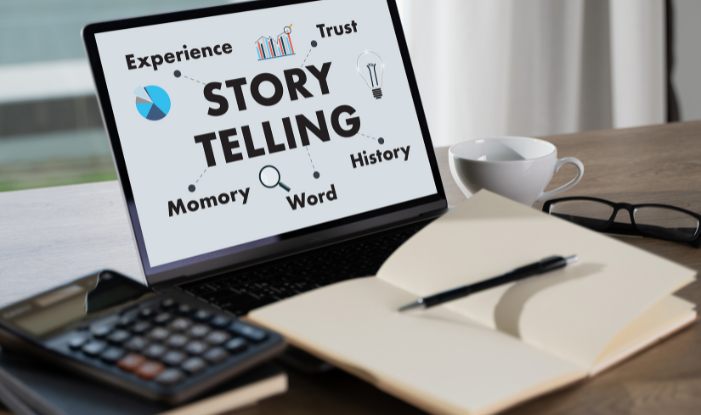In the vast online landscape, where attention spans are short and competition is fierce, capturing and retaining users’ attention is crucial. This is where the power of visual storytelling in web design comes into play. By weaving captivating narratives through visuals, typography, and content placement, you can create impactful user journeys that leave a lasting impression on your visitors.
The Art of Visual Storytelling
Visual storytelling is the art of using visuals to convey a story, evoke emotions, and engage users on a deeper level. It goes beyond simply presenting information; it immerses users in an experience, making them an active participants in the narrative you’re crafting. By leveraging the power of visuals, you can communicate your brand’s values, evoke emotions, and guide users through a carefully curated journey.
One of the fundamental elements of visual storytelling is the use of compelling visuals. High-quality images, illustrations, and videos can evoke emotions, capture attention, and make a lasting impact. By carefully selecting visuals that align with your brand’s message and resonate with your target audience, you can create an immediate connection and draw users into your story.
Typography
Typography also plays a crucial role in visual storytelling. The choice of fonts, sizes, and styles can convey different tones and emotions, enhancing the overall narrative. Consider using typography that complements your brand identity and helps to guide users’ attention to key messages or focal points within your design.
Strategic placement of content is another essential aspect of visual storytelling. By structuring your website’s layout thoughtfully, you can guide users through a seamless journey, unfolding the story logically and engagingly. Consider using visual cues, such as arrows or animations, to direct users’ attention and create a sense of progression.

Practical Examples of Visual Storytelling in Web Design
Practical examples and tips can help you integrate visual storytelling techniques into your web design process effectively:
Determine the story you want to tell and align it with your brand identity and values. This narrative should resonate with your target audience and create an emotional connection.
Select images, illustrations, and videos that capture attention and evoke the desired emotions. Ensure that the visuals align with your narrative and brand image.
Experiment with different fonts, sizes, and styles to convey the right tone and guide users’ attention. Consider typography hierarchy to prioritize key messages and headings.
Plan the flow of your website, ensuring a logical progression of content and interactions. Use visual cues and smooth transitions to create a sense of cohesion and guide users from one section to another.
Leverage interactive elements such as animations, scroll effects, and hover states to engage users and enhance the storytelling experience. These interactions can reinforce your narrative and create memorable moments.
Remember, the goal of visual storytelling in web design is to create impactful and immersive user journeys. By carefully crafting narratives through compelling visuals, strategic typography, and thoughtful content placement, you can leave a lasting impression on your visitors and differentiate your brand in the digital realm. So, unleash your creativity, tell your story, and create remarkable experiences that captivate and resonate with your audience.






Popular Comments